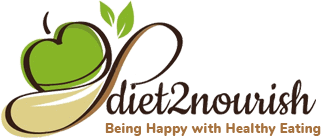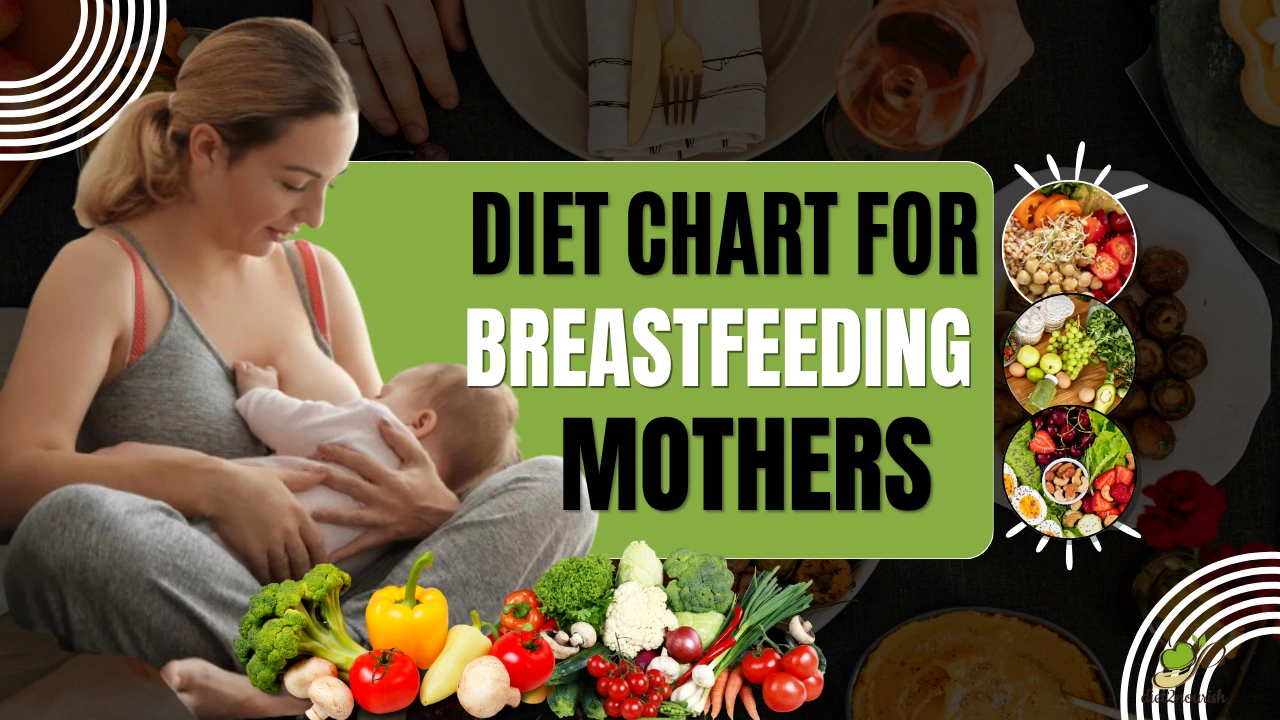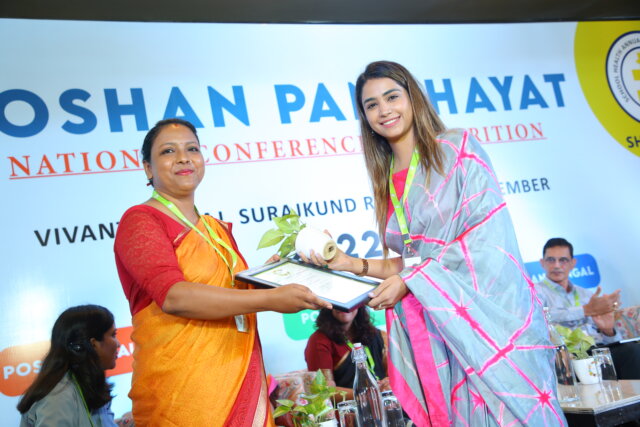Diet for Breastfeeding Mothers is very important part because motherhood is a big transformative experience for any woman. Babies don’t come out of the birth canal with the press of a button. If it was so, life would have been much easy. You have to undergo a lot, bearing him in your womb for long nine months and take all the pain in delivering him. Now, that you have your baby in your laps, it’s time to nourish him properly, feed him, and eating a proper breastfeeding diet for the baby is an essential part of keeping yourself and the baby healthy.
Eating for your baby

Starting the third semester, the baby can taste food what his mother eats, and when he is breastfed, he gets more of the taste. The period of lactation is special for any mother in her lifetime. It is often considered a moment of pride for a woman. This phase requires extra care and eating the right foods to increase breast milk so that she can produce high-quality and abundant milk to feed her infant.
Breastfeeding is considered the best for a baby in its initial stages. A mother should make sure that she eats a proper diet for lactating mothers that supply her body with all the precious nutrients and vitamins that the baby needs to develop and grow healthy are in his mother’s milk. Therefore, to ensure that your baby is getting all that he needs, you must take care of the foods to eat during breastfeeding and keep a close watch on everything you take in.
A normal breastfeeding woman typically produces between twenty-three to twenty-seven ounces of milk per day (0.6 liters to 0.8 liters). This is considered a healthy production of milk, and to ensure that you can produce this much volume of milk, you must ensure that your Indian diet for breastfeeding mothers must have around five hundred or more calories a day than you usually use to have earlier.
Water is another important component of your milk production. You must ensure to intake at least two to three liters of water in a day. The water consumed straight away goes for your milk production, no wonder why you feel thirsty these days. However, drinking too much water may reduce the production of milk.
Breastfeeding is a wonderful experience towards raising a healthy child. It is very critical to keep yourself at the top of your health during this phase, and as well as for yourself.
The Calorie & Protein Intake :
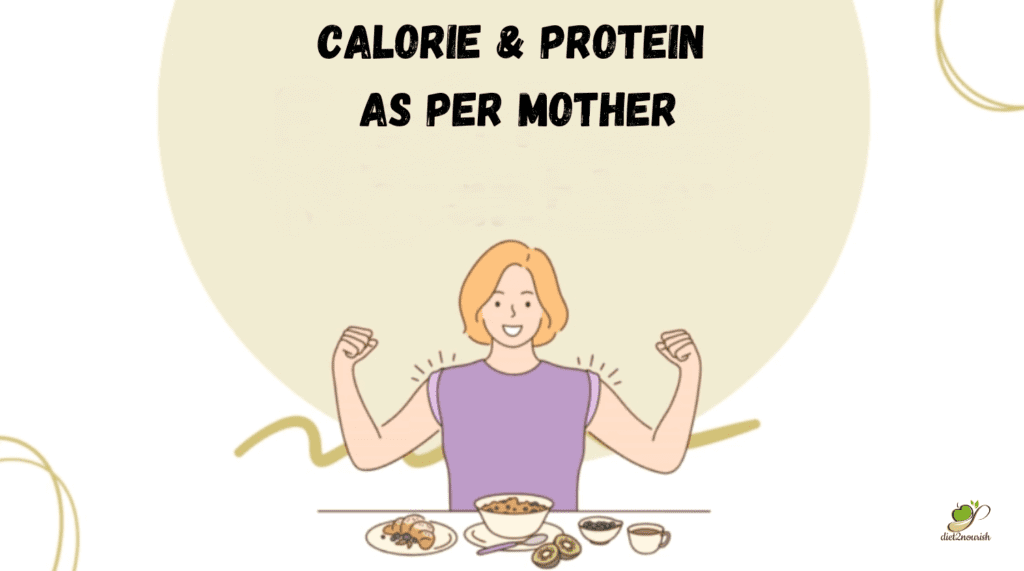
The Calorie & Protein Intake :The importance of calorie intake cannot be overlooked. If you are planning to nurse your baby for the next three months, your intake should count to at least 2500 calories a day. But calories intake does not advocate the fact that you can start consuming junk, which has no nutritional value. Protein is a vital component for any breastfeeding mother. You should make sure that your diet plan for breastfeeding mothers should make you consume one gram of protein for every pound that you weigh per day.
The Meal Intake
You should change your eating style and in your diet for breastfeeding mothers to increase milk, and switch to eating six meals a day – breakfast, snack, lunch, afternoon snack, dinner, and snack afterward. Your body needs to get a regular supply of nutrition and healthy foods as it works all around manufacturing milk.
Hold on Junk Intake
Spicy and greasy foods and chocolates are harmful to your infant. Even you may experience stomach upset and other problems eating spicy and greasy trans foods. The effect of such foods is higher on our small babies. You should strictly hold on to your habits of eating junk till the time you are breastfeeding. Be a healthy mother to your healthy baby and maintain a well-balanced diet for lactating mothers.
Consider your food intake
In addition to junk, certain foods otherwise are considered very healthy that may not be right for a breastfeeding mother. Onions and garlic are some of them. One of the main reasons why foods with strong flavors are to be avoided is because these foods can change the taste of your milk, and your baby may refuse to nurse. You should know that your baby’s taste buds are not the same as yours, they need time to become acclimated to different new tastes, and breastfeeding is not the time for experiments.
The Beverages Intake
Just like all food does, the beverages that you consume influence the taste of your milk. Just like you were asked to stay away from caffeine during your pregnancy days, you should avoid it during your breastfeeding days too. A cup or two of caffeine or soda may be ‘ok’, but in excess is harmful to your nursing baby.
The best foods for lactating mothers to increase breast milk
Stimulating breast milk production is not about eating one or two particular foods but is all about adapting to a healthy eating habit that promoted the production of breast milk. Diet overall or the mother feeding foods is a crucial component in accessing breast milk production, and many women neglect this all-essential nutritional need.
Throughout the globe, women of various cultures believe in eating certain milk-making foods right after their childbirth and all through the breastfeeding period. Many of these foods are rich in essential vitamins and minerals, while others have essential chemical properties that aid in breast milk production.
Let’s have a look at some of these foods that every diet chart for breastfeeding mothers should have:
Diet Chart for Lactating Mother should have
Dark Leafy Vegetables
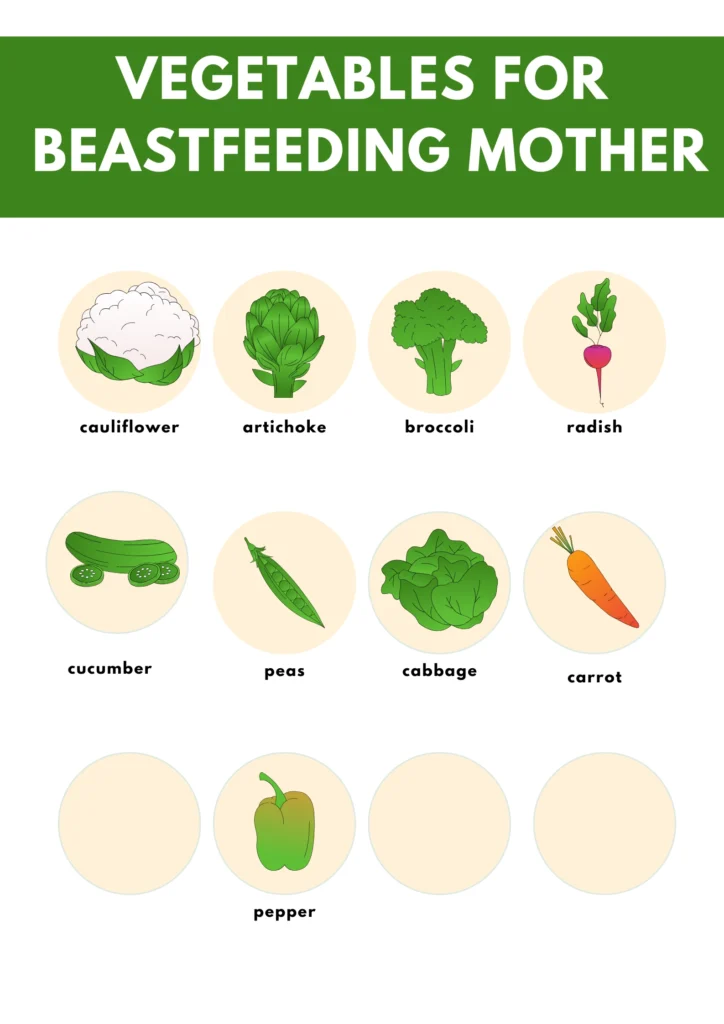
- Dark Leafy Vegetables: These miracle veggies are a must in any best Indian diet chart for breastfeeding mothers. They are a storehouse of essential nutrients, mainly calcium. They also have the essential phytoestrogens – much needed for breast milk production. Lettuce, kale, broccoli, and spinach are some of them.
Whole Grains
- Whole Grains: Whole grains are not only nutritious but also have the properties that support your hormones responsible for milk production. Try oatmeal, barley, brown rice, oatmeal and cereal cookies, and all other whole grains.
Almonds
- Almonds: Nuts and seeds, especially almonds are rich sources of calcium and protein. Choosing to eat almond or drink almond milk can improve the creaminess of your milk, along with its sweetness and volume.
Flaxseeds
- Flaxseeds: Flaxseeds also have phytoestrogens that largely influence your breast milk production. These tiny tine seeds are a valuable source of healthy and essential fatty acids.
Papaya
- Papaya: Both raw, cooked, and ripe, papaya has long been considered a galactagogue in Asian countries. Though studies are still being conducted, it is not bad at all to give it a try.
Fenugreek
- Fenugreek: These aromatic wonders are touted as galactagogues. They have similar to estrogen compounds that aid in the production of breast milk.
Chickpeas
- Chickpeas: Garbanzo beans are common in the Mediterranean and Middle Eastern countries. Since the ancient Egyptian period, women have been eating chickpeas to increase their breastmilk production. Chickpeas are high in fiber and proteins and also estrogens that may be responsible for aiding in the higher production of breast milk.
Breastfeeding Mothers and Weight Loss

No doubt, breastfeeding moms are the busiest bunch of people on the planet. Finding out time to work out may seem to be an impossible task. Also, newborn infants need a lot of care and attention, it could get almost impossible to find our time to work out.
Now that you have put in all the efforts carrying your baby for nine months in your womb, and are tired of feeling overweight, you would need to shed the extra weight that you have put on., but wondering how to reduce weight during breastfeeding?
Do you know that breastfeeding moms shed weight more quickly? Just stick to a healthy eating regime and put some exercise daily.
The longer you breastfeed, the easier it is for you to shed the extra weight. Do not raise your calorie count unnecessarily. Once your baby starts taking solid food, you generally plateau on your extra weight, unless you incorporate some exercise in your daily routine and maintain a diet for breastfeeding mothers to lose weight.
Lose weight safely and quickly while you breastfeed
Several factors determine how efficiently and faster you can lose weight while you are still breastfeeding. These are:
- Your Metabolism
- The Diet
- Your Exercise Plans, and
- The amount of weight you have gained with your pregnancy
The Calorie Intake: To maintain your weight while you are breastfeeding, and keep your energy levels high with adequate milk production for the baby, you will need at least 450 to 500 calories additional per day. Once you have determined this, you will have to ensure that all your calories come from nutrient-rich sources like fruits, vegetables, whole grains, and lean proteins.
If you are trying hard to lose weight, avoid foods with empty calories like white bread, buttery cookies, all baked foods, junk foods, and pasta.
Follow these basics:
Go for low carb foods:
Limiting carbs can be harmful during pregnancy, hence, make sure that you supplement your diet with ample fruits, vegetables, and proteins.
Stay hydrated always:
While you are breastfeeding, you must stay properly hydrated always. Drinking water and other clear fluids help in flushing out extra water weight from the body. Do not consume sugary drinks, as these are loaded with empty calories.
Eat frequently:
Eating frequently will keep your energy levels high and constant. You may feel extra hungry during this period. Help your hunger by adding healthy snacks in between meals often.
Never skip meals:
Skipping meals while breastfeeding to lose weight is more harmful than ever, for you and your baby too. Skipping meals will slow down your metabolism, making you less active and care for your baby. Moreover, weight loss will become difficult with a slower metabolic rate.
Exercise, but safely:
Ease back on your exercise plans during this phase. Rely more on postpartum exercises. Do yoga and go for brisk walks with your baby along.
Pregnancy and becoming a mother is one of the most beautiful experiences that you will enjoy being a woman. It also comes with certain challenges and more responsibilities. Make sure that you stay healthy and active to take good care of your baby and yourself. Try not to compete and compare yourself with others. Exercise regularly, maintain a healthy diet for breastfeeding mothers, and eat with caution with a focus on eating healthy without decreasing too many calories while you are breastfeeding.
Lactating Mother’s Diet Chart
Pregnancy and childbirth can sometimes be very stressful for a mother. She has to undergo many physical changes while carrying a baby in her womb for a full term. Lactating is one of the most crucial phases after childbirth. The mother should be well nourished during this phase as the mother’s milk provides the necessary nutrients to the new-born. In addition, it strengthens the immune system. Since the mother produces around 2 L of milk daily, the calorie intake in the lactating mother’s diet plan should be higher than that of a non-pregnant or lactating woman. Here, we have enlisted a breastfeeding mother’s diet chart to provide the mother with adequate nutrition and increase breast milk.
A Simple Diet Chart for Lactating Mother :
| Early Morning | 5-6 overnight soaked almonds+2-3 dates with a glass of warm water Or decaffeinated tea+2 marie biscuits |
| Breakfast | 1 cup poha+1 cup skimmed milk+1 cup of apple OR 2 egg omllette+ 3 slices of whole wheat bread with butter +1 cup baked potato wedges |
| Mid morning | 1 Gud Laddo+ watermelon seeds |
| Lunch | 1 cup steamed rice+ 1 cup moong dal+1 cup Ashgourd Sabzi+1 cup beetroot and onion salad Or 2 whole wheat chapatis + 1 cup chicken gravy +1 cup onion and cucumber salad |
| Evening Snack | 1 glass buttermilk +1 cup roasted makhana Or 1 cup beetroot chips+1 cup of green tea |
| Dinner | 1 cup dahlia khichdi+ 1 cup dahi+ 1 cup baked carrots Pand peas salad or 1 cup whole wheat pasta+1 piece grilled chicken +1 cup boiled mixed vegetables |
| Bed time | 1 cup milk with 2 tbs whey protein. |
Suppose you are committed to the lactating mother’s diet chart as recommended by your physician. In that case, there are also certain foods to avoid in the breastfeeding diet. Some of the foods that lactating mothers need to avoid are listed below:
Foods to avoid in the lactating mother diet
1. Processed Foods:
Junk and processed foods are packed with harmful chemicals and additives, so avoiding processed foods while on a lactating mother’s diet plan is best. Additionally, they are loaded with unhealthy fats that can be toxic to the mother and the baby’s health, causing symptoms like nausea, bloating, constipation, etc. Again, lactating mothers should strictly avoid foods containing high fructose.
2. Alcohol:
Alcohol intake during the lactating phase is a BIG NO. Whatever the mother eats affects the overall well-being of the baby. Daily intake of alcohol can cause severe neurological complications. It may also cause difficulty forming and releasing breast milk leading to a baby starving.
3. Sea Food
like prawns, shellfish, crabs, and even high mercury fish like tuna, on a lactating mother’s diet plan can be a detrimental effect on the new-born’s health. When the levels of mercury are high in the breast – milk, it can cause several neurological complications in the baby, like seizures, neural tube defects, etc.
4. Cruciferous vegetables
such as broccoli or cauliflower might cause acidic reflux, causing the baby to feel nauseous, bloated, and irritated. Doctors and dieticians usually recommend avoiding certain vegetables like broccoli, which is hard to digest and causes acidity.
5. Caffeine
has adverse effects on the new-born baby. When a breastfeeding mother consumes caffeine, it could affect the baby’s sleep.
How to increase breast milk

Breast milk offers numerous advantages to a baby’s health and well-being. It fulfills all the nutritional requirements of the newborn. Breast milk is full of antibodies that are a barrier to shield the baby from infections. Breastfeeding can assist mothers in losing pregnancy weight more rapidly and protect them from ovarian cancer and osteoporosis.
While some women have no trouble lactating, there are some instances where women struggle to give their infants enough breast milk. But sometimes, if a nursing mother cannot produce enough breast milk to meet her baby’s daily nutritional needs, she may become anxious. Low lactation levels can be due to various factors, like any underlying illness, age, postpartum depression, etc. In this article, we have tried to bring out a few foods to increase breast milk that will help you to prevent your child from malnutrition.
Fenugreek Seed:
One of the most popular foods to increase breast milk is fenugreek seeds. Due to the plethora of health advantages, fenugreek is added to many Asian dishes. Estrogen is a crucial hormone for lactogenic growth found in fenugreek seeds. It can be consumed in the form of tea. Additionally, numerous supplements made from fenugreek seeds are available on the market.
Barley:
It is rich in beta-glucan, which helps increase the prolactin levels in nursing mothers. You can consume barley in the form of a vegetable stew or along with some roasted vegetables. When the barley germinates, it becomes a syrupy malt that tastes like maple syrup. Barley malt is also beneficial for breast milk production as it is rich in beta-glucan. Therefore, barley is a vital food to increase breast milk.
Sesame Seeds:
Sesame seeds are one of the richest sources of plant-based nutrients like estrogen, calcium, and omega-six fatty acids that are crucial for the mother and the baby. Tahini is a famous and mouth-watering dip made of sesame seeds paste. It can be complemented with baked chips, falafel, etc. You can consume sesame seeds in salads or make laddoos out of them. Incorporating sesame seeds daily in your diet in various forms can be the solution for how to increase breast milk.
How to increase breast milk naturally at home
Breastfeed Longer
- Breastfeed Longer: The golden rule for increasing breast milk naturally at home is consistently removing enough breast milk daily. When the baby is uninterested in breastfeeding from one side, try switching to the other side. Do not follow a particular schedule to breastfeed the baby. Your newborn will show certain signs when they are hungry. So, if you are wondering how to increase breast milk naturally at home, feeding your baby whenever they are hungry will benefit you and your baby.
Warm Compress
- Warm Compress: After each feeding session, you can apply a warm compress to each breast. Applying a warm compress will reduce the soreness and increase the blood circulation in each breast. It will also help in opening the milk ducts and increase milk production. A warm compress will solve most of your queries about how to increase breast milk.
Breast Massage
- Breast Massage: Breast Massage is a simple and practical approach to increasing milk supply. It aids in stimulating the breast and produces more lactogenic hormones. You can start breast massage by slightly moving your fingers from the top of your breast towards the nipples. You can do the breast massage after each breastfeeding session.
Reduce Stress
- Reduce Stress: Stress and anxiety can affect your oxytocin production. Oxytocin is a female hormone that causes milk to flow freely from your breasts. So, you can put on certain relaxing sounds or play a fun movie while breastfeeding to relieve yourself from stress and anxiety issues. Alternatively, before each feeding session, you can soak your feet in a bucket of warm water with some Epsom salt and a few drops of lavender oil to calm your nerves.
What to drink to increase breast milk
Maintaining adequate lactation for your new born is crucial to keep yourself hydrated. Here are some beverages that will help you in your quest for what to drink to increase breast milk.
1. Lactation Smoothies
are a healthy and tasty way to increase milk production. You can make a lactation smoothie with a ripe banana and a glass of almond milk. Add some more galactogen-containing seeds like chia seeds and flax seeds to the milk to enhance the efficacy of the smoothie. Then, blend everything using a good blender, and your lactation smoothie is ready.
2. Lactation Latte:
Certain caffeine-free lattes are available to increase lactation for moms. Such lattes are made of natural ingredients like oat milk powder beneficial for milk production.
3. Beetroot Juice
is highly beneficial for breastfeeding mothers. It offers a variety of functions like increased blood flow to the breast, combating anemia, and enhancing milk supply.
4. Coconut water
contains a good quantity of electrolytes, which help to keep your milk supply up.
5. Water
keeps your milk supply up, but it also helps to prevent dehydration. Drink 2 liters of water daily or even more if you are nursing.
6. Coconut milk
is a good option for breastfeeding moms because it is high in potassium, magnesium, and vitamin C.
7. Infused water:
Fill a bottle with about 1/3 fruit and 2/3 ice, then fill to the top with water. You can use cucumber and melon, strawberry and watermelon, raspberry and lemon. Leave it in the refrigerator overnight.
8. Almond milk:
Dairy is the leading cause of problems with nursing babies. If you want or need to cut dairy but still want milk, almond milk is a good alternative.
How to increase breast milk by Indian Food
A Mother’s diet directly affects the quality of milk, so lactating mothers should consume foods that are rich in all essential nutrients. Here are a few tips on how to increase breast milk by Indian food:
1. Garlic
is a galactagogue and consuming it regularly can greatly increase your breast milk. So, it is an interesting and most convenient solution to the question of how to increase breast milk by Indian food.
Fennel seeds are a traditional remedy for enhancing lactation.
2. Green leafy vegetables
(palak, methi, Sarson ka saag, or bathua) are also believed to enhance lactation.
3. Cumin seeds
improve digestion and stimulate lactation.
4. Dill seeds/leaves
improve lactation and sleep. It also eases digestion.
5. Gourd vegetables
like bottle gourd (lauki), apple gourd (tinda)) and sponge gourd (tori) is believed to improve lactation.
6. Daliya
is popular with nursing mothers. It helps to ease anxiety and depression.
7. Red lentils
or masoor dal improve lactation. It has a good amount of protein, iron, and fiber.
Fruits to increase breast Milk
During breastfeeding, you might have to steer away from a number of your favourite foods. But one healthy food option you can indulge in is fruits. In this article, we have listed a few delicious fruits to increase breast milk.
1. Avocado
offers amazing benefits both during pregnancy and the lactating phase. The omega 3 fatty acid helps to produce thick and good quality breast milk. Undoubtedly, it is a super fruit to increase breast milk.
2. Chiku
is an excellent choice for breastfeeding moms. It is rich in nutrients and easy on the gut.
3. Green papaya
is one of the best fruits to eat during breastfeeding. It helps with lactation by boosting the production of the hormone oxytocin.
4. Strawberries
The high-water content of strawberries helps lactating mothers stay well-hydrated as they nurse their babies.
5. Bananas
Potassium-packed bananas help maintain fluid and electrolyte levels. It can help keep a good breast milk flow.
6. Mango
The potassium content of mango helps a breastfeeding mum to replenish her nutrients.
Summary
Enjoy your breastfeeding adventure with a combination of these amazing tips. The above tricks have been effective on nursing moms since years, so it will definitely clear all your doubts regarding how to increase breast milk.
Frequently Asked Questions (FAQs)
Every pregnancy is different. Some babies are allergic to certain foods. Hence for six weeks breast feeding mother should avoid such foods like-
You can slowly switch back to your normal diet after six weeks or you may consult a dietician before taking normal diet.
Chocolate- contains theobromine that can affect baby’s sleep.
Coffee- contains lots of caffeine that affects baby causing irritation and crankiness.
Citrus fruits- its full of vitamin C, but due to the acidic components of fruits it can upset baby’s tummy.
Broccoli- baby can have gassy problems.
Alcohol- consumption of alcohol may affect baby’s neurological development.
Mercury fish- breast milk contains high level of mercury, if you eat more mercury then its harmful for your baby.
Peppermint and sage- this can reduce the amount of breast milk, so its better to avoid this.
Garlic- by consuming it , may affect the smell of the breast milk.
Spices- it can irritate the baby, and your baby might feel uncomfortable.
If you are in the process of breastfeeding, then your body definitely would need extra calories. You should take 2200 to 2500 calories in a day. These calories will increase the nutrition level of your milk. To get this extra calorie you should go for the foods like whole grain bread, banana, apple, yoghurt. Focus on making healthy choice of diet that will help in producing more milk. Hence, breastfeeding mother needs 3.1 ltr (13 cups) fluids for the optimal health of the baby and mother. The mother can stay hydrated whole day by consuming adequate fluids. Drink water more often or if you like you can consume any healthy beverages every time you breast feed. Maintaining a good fluids and calorie intake in your diet is very much important for a lactating mother.
Most pregnant women gain average 25-35 pounds weight during pregnancy. Therefore, after giving birth many of us thinking to shed the extra shed. We know dieting or losing weight during pregnancy is not a safe option. Well, after pregnancy losing extra kilos is also not safe. After 6 months of post pregnancy, you can go for weight loss. Even if you are lactating, automatically you lose weight. You should be careful in your diet plan. Its true that breast feeding mother has a chance of losing weight more rapidly. The mother should eat healthy to satisfy the amount of nutrients the baby needs. This weight loss becomes steady while breastfeeding because the process of lactation (milk production) uses the extra body fat that was stored during pregnancy. Every time the mother feed the baby; her body promotes lactation with about 500 calories from stored fats. As a result, breastfeeding women can lose weight sooner and get to their pre-pregnancy figure after the first three months.
Many breast-feeding mothers think that the food they consume could affect their breast milk. The truth is that your milk is perfect for your baby regardless what you eat.
Now the question is what should a breastfeeding mother should eat to lose weight. Use the following tips to lose weight-
Add protein intake 5-6 times a day- they are meat, beans, nuts and seeds.
Eat fresh vegetables per day- including green, yellow vegetables.
Eat fruits like apple, peach, guava.
Include whole grains such as cereal, oat meal, wheat pasta, bread in your daily meal.
Indian spices like methi, ajwain, cumin, saunf should be added in lactating mothers meal, as they will improve the quality of breast milk.
By changing the diet plan after 6months of delivery a lactating mother can easily lose weight while stay healthy and steady.
Focus on the best nutrients foods while you are breastfeeding. This will give fuel to milk production. Always opt for protein rich foods. Hence the best nutrients food for lactating mothers are as follows-
Lentils, beans, lean meat, eggs, fruits, vegetables etc. choose a variety of whole grains. Choose citrus foods such as citrus fruits. Consume good sources of calcium such as dairy products and dark green vegetables.
Your baby needs vitamin, calcium and lots of proteins. So while breast feeding you should take the foods that include nutrients and vitamins.







